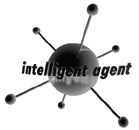
networking communities


| Communications technologies and the Internet have substantially contributed to the much discussed phenomenon of globalization, but have also nurtured a new interest in community revitalization. The fear of homogenization--one of the less desirable side-effects of globalization--may have increased the need to define our identities as individuals or as groups with special interests and common links. The Web facilitates the creation of communities based on shared information, and many organizations that rely on information exchange by now have their online incarnations. There is also a growing number of online community networks designed to serve the common interests of geographically defined communities through electronic communication among citizens, private and cultural organizations, local business and government. Of course, the physical means by which a user may connect to the network is key here; some networks attempt to provide access themselves (through Web kiosks or computers available to the public), others have their users rely on commercial service providers. Ideally, these community networks make it easier for users to tap into cultural resources, education and community development, thus allowing increased participation in the democratic system. Two examples of different approaches to the creation of a community network are LA Culture Net and The Davis Community Network. |

Features of the LACN's website include a community-generated list of arts and other cultural events; the "Tour Bus"--a virtual (Shockwave) tour of selected Los Angeles cultural organizations, which is available in a variety of languages; "Community Properties," a searchable index of over 400 online cultural heritage resources in Southern California; "People to People," an area for discussions among visitors; as well as a space called "Neighborhood Views," which gives community members an opportunity to report on cultural happenings in their area (at the time of a recent visit, "Neighborhood Views" presented reports on graffiti art and the work of sand sculptor Larry Nelson). The site also offers access to the "Culture Lab," which includes a curriculum unit, online exhibitions, a sound room and a bookstore allowing visitors to search thousands of records from several Getty databases. The curriculum unit features "Exploring Questions of Identity: The Battle of Little Big Horn," a variety of source materials (provided by the Southwest Museum Research Library) that address the question how representations of events, in words and through art, help us reach definitions of identity. Online exhibitions that can be visited at the site are "In Our Own Backyard--Resisting Nazi Propaganda in Southern California, 1933-1945" and "Faces of L.A.," a project that invited 10 institutions--ranging from the American Film Institute and the Museum of Tolerance to the Los Angeles Public Library and the UCLA Fowler Museum of Cultural History--to showcase a collection or program that they considered indicative of their presence as a cultural institution in Southern California.The contributions strive to illustrate the culture and/or history of the peoples of Southern California--be it authentic or idealized, historical or contemporary--as they represent themselves through media such as art, literature, and film. |
|
Compared to LACN, "The Davis Community Network" takes a more grass-roots approach to serving the geographical community of Davis, California. The network's supporters and sponsors include the California State Department of Transportation, Corporation for Public Broadcasting, University of California at Davis, City of Davis, as well as Sun Microsystems and QUALCOMM, Inc. No "shocked" bus tour here, but visitors leave the site with a sense of community. The site provides access to listings of the current events of the day, week and month, and to sections on arts and entertainment; newspapers, TV and radio; tourist and new-resident information; census data and maps and local newsgroups. Visitors will also find a business directory and links to the schools and universities of the area as well as information on the city's commitees, ranging from city council minutes and agendas to city commission rosters and schedules. Exploring the site, users will find all they need to know about the local weather conditions, the Davis Post Office and food co-op, and the future plans for the city's development--information that may not be of great interest to the casual visitor, but is of crucial importance to "daily life" in a city.
"LA Culture Net" and the "The Davis Community Network" do not only illustrate how many options the creators of a community network have at their disposal, they also help to exemplify the multi-faceted meanings of the term "community" and to reconsider these communities' needs. |